A few shots from the opening of the Open, 2nd August 2019… running at Williamson Art Gallery until 15th September.
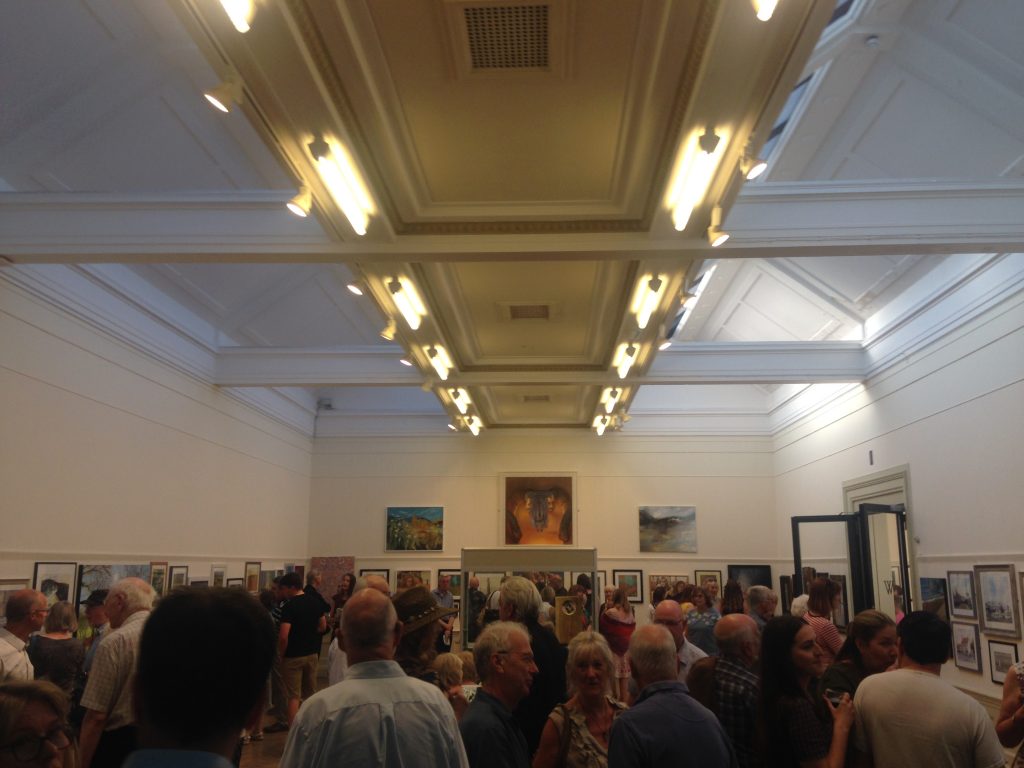
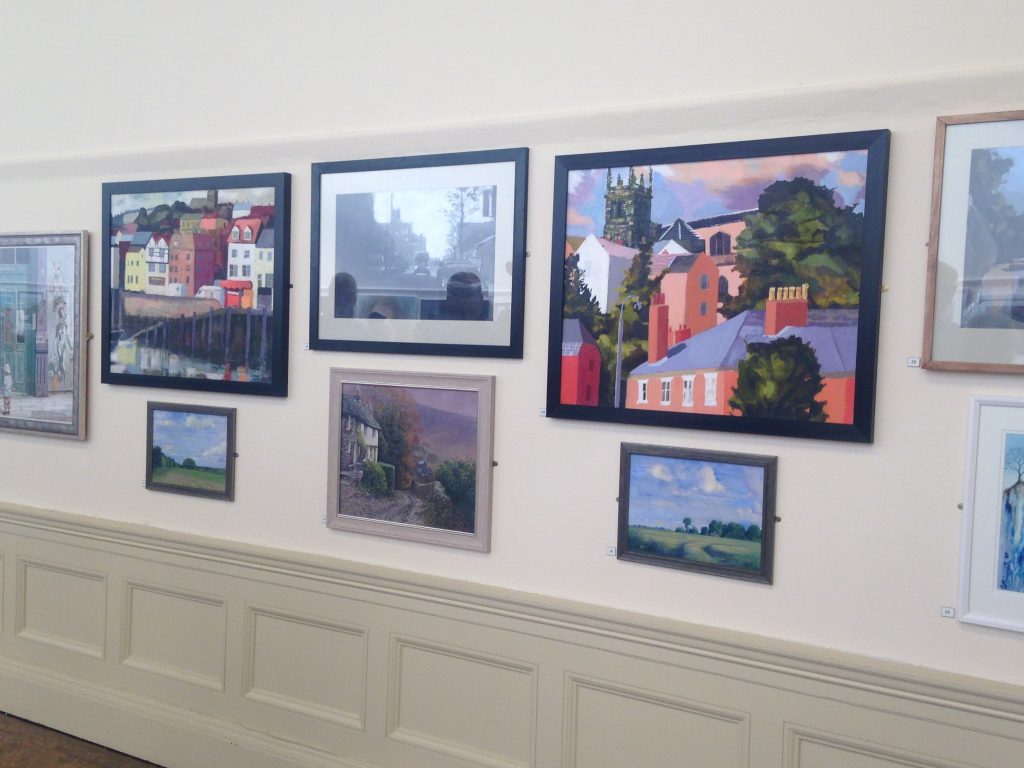
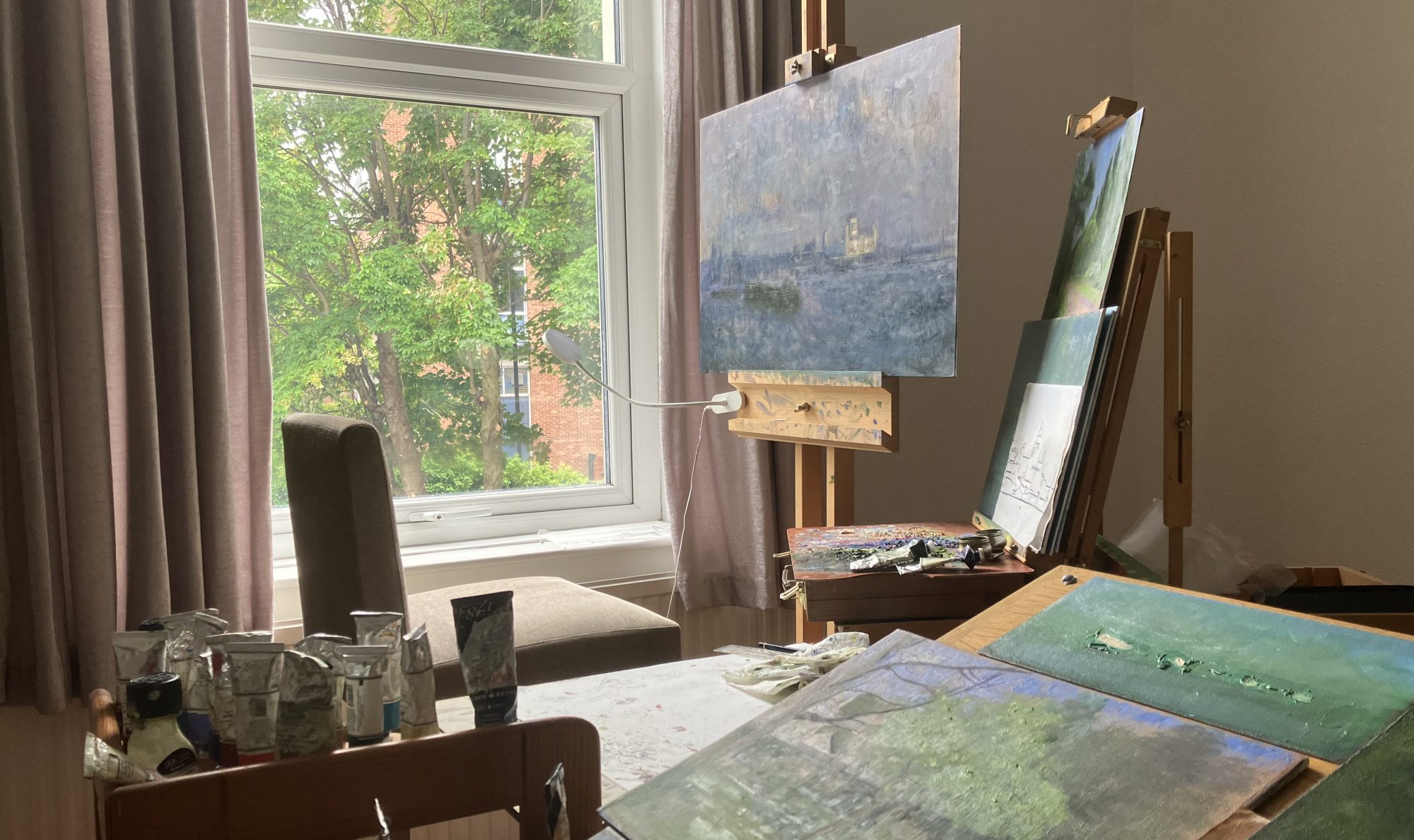
A few shots from the opening of the Open, 2nd August 2019… running at Williamson Art Gallery until 15th September.


Williamson Art Gallery will host Wirral Society of Arts 9th Open Exhibition between 3rd August & 15th September 2019. Two pieces of mine will be involved here: ‘Fields at Brimstage’ and ‘The North Lodge Thornton Hough’.
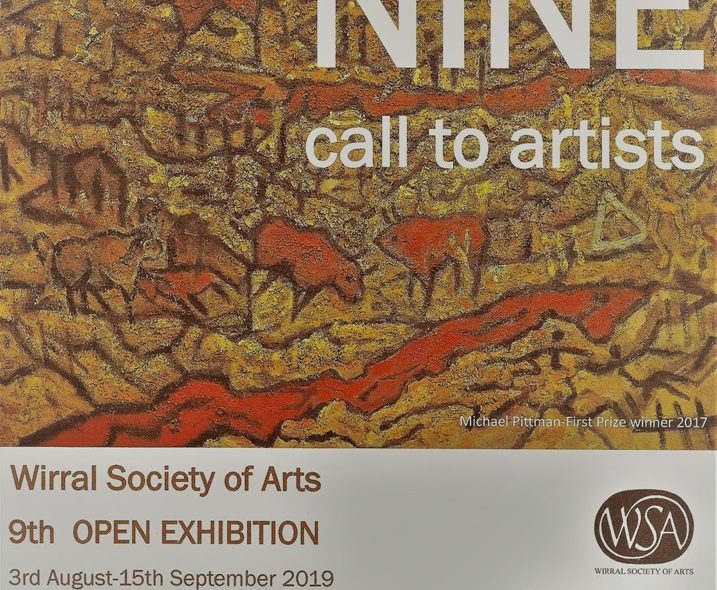
The Fields of Arrowe were named after the families that once farmed them….
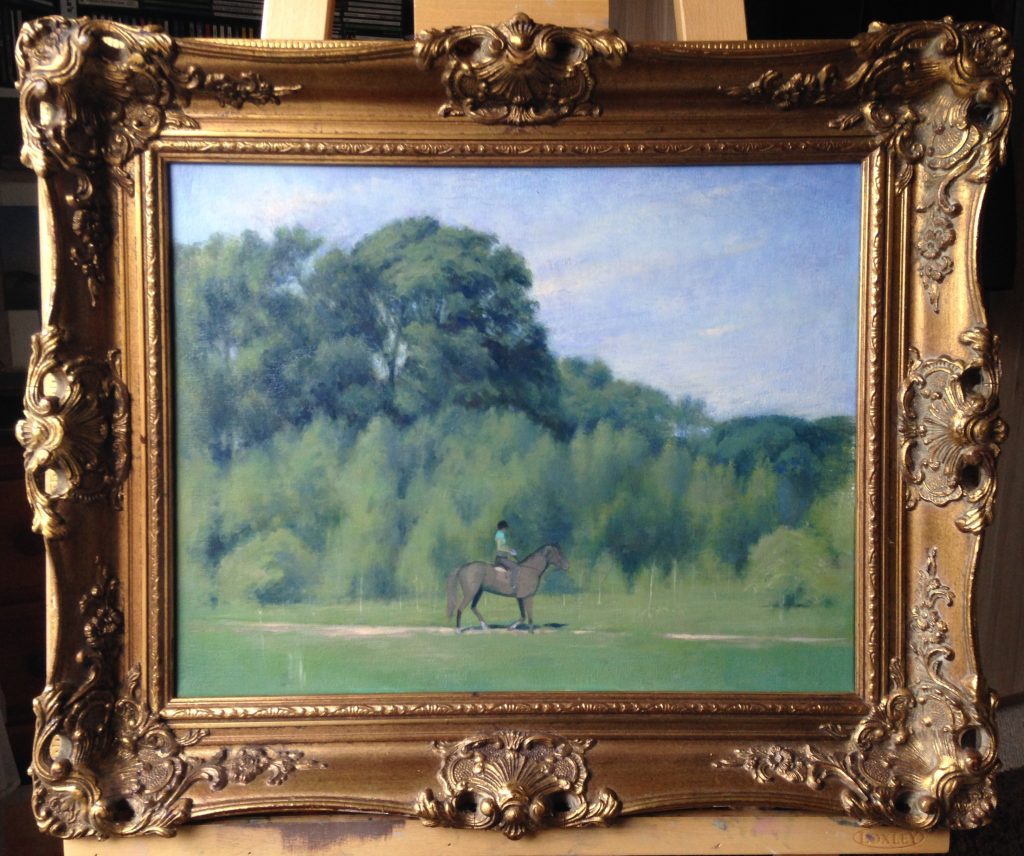
A view in Linacre’s Arrowe, Buckleys Hey and Broad Arrowe. Work in Progress.
If you are able to get along to the Williamson Art Gallery in Birkenhead, you will be able to catch the annual Open Art & Photography Exhibition 2018. It’s a strong showing all round and I’m very pleased to be amongst the exhibitors this year with two pieces.
The exhibition is open Wednesday – Sunday 10am – 5pm and runs until 6th May. More details here: https://williamsonartgallery.org/portfolio/williamson-open-2018/

Cottages at Port Sunlight, Oil on Board, 2017
A selection of my historic Port Sunlight scenes are now available as limited edition prints.
This is quite possibly a one off print run so limited indeed. There are five scenes available and they are available to view over at the ‘Prints & Postcards’ page.
They measure 20 x 25 cm and each one will come individually hand signed and numbered.
As the original paintings are now all sold this is a chance to grab the next best thing.
Stuart
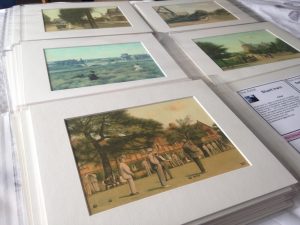
Very pleased to write that I will be exhibiting ‘Study from the back bedroom window, Wood Green’ at this year’s Royal Society of British Artists Annual Exhibition (the society’s 300th annual show) which runs from 22nd March to 1st April, 10am to 5pm at the Mall Galleries in central London.
The painting was executed from Palace Gates Road in North London, and looks North East across Bounds Green during summer 2016.
Very much looking forward to seeing the show now! my first London exhibition. Stuart.

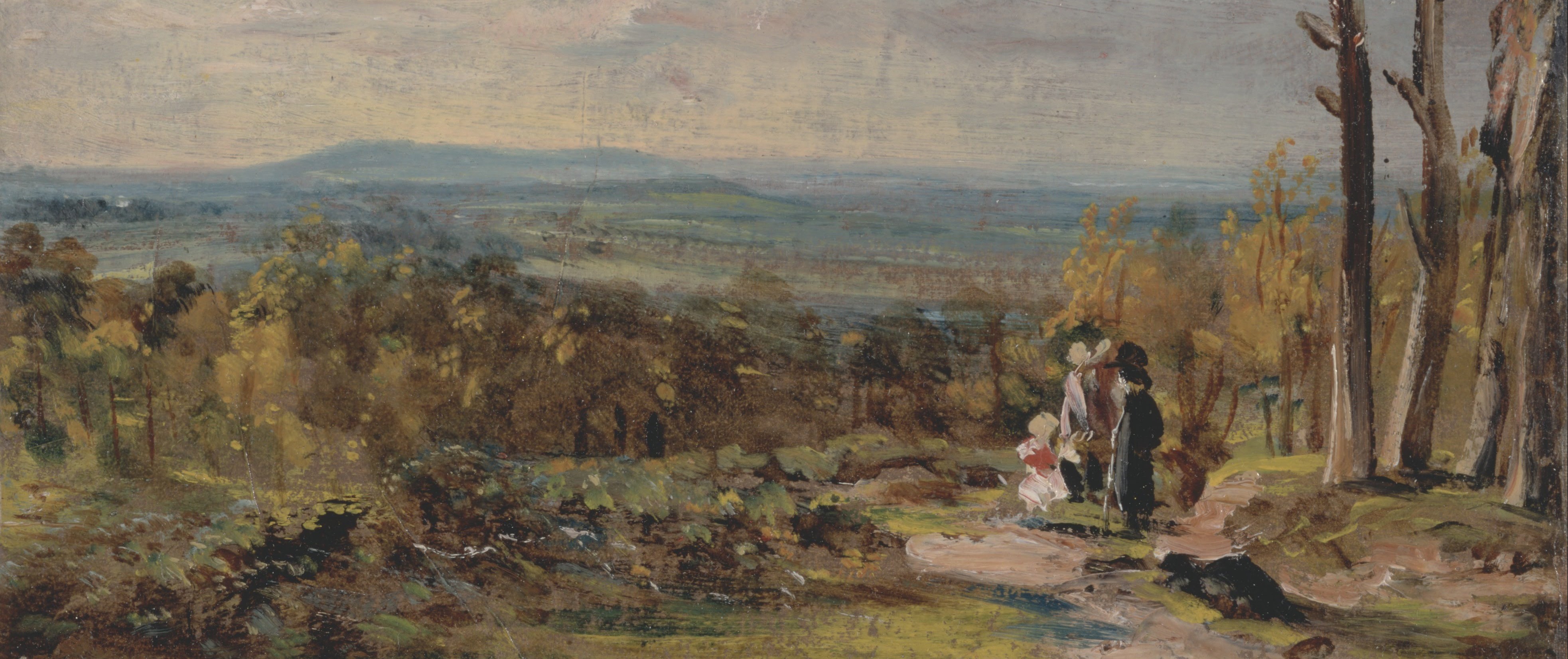
Having spent many years pouring over John Contable’s work, in particular his Hampstead era landscapes and oil sketches – some of which I consider to be his finest works – last weekend I took the opportunity to explore his old stomping ground in North London.
Some background…
Despite the fact that Constable will forever be associated with Suffolk, that area of the county now labelled ‘Constable Country’, the artist spent a large proportion of his professional years based in London.
Like most professional artists of his time, Constable needed a base in London to negotiate with prospective buyers. After his marriage in 1816, he established a home at 76 Charlotte Street, Bloomsbury (now demolished), and then every summer from 1819 to 1826 rented a house at Hampstead for his family. During these periods he would let out part of the Charlotte Street property and would later remark that he was ‘three miles’ door to door – can have a message in an hour – and can always get away from idle callers – and above all see nature and unite town and country life’.
Hampstead Village was at that time part of Middlesex, outside the city. Constable originally arranged these summer migrations to improve the health of his wife and children, but he soon found plenty of subjects to paint. The family moved there more permanently in 1827. This first blog post deals with the area the west of the village centre, and West Heath.
Lower Terrace Number 2 Lower Terrace is the house the family stayed at in the summers of 1821 and 1822. The road is close to the centre of the village, and overlooks West Heath.
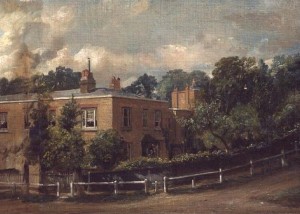
‘Lower Terrace, Hampstead’ c. 1821 -2. Board of Trustees of the Victoria & Albert Museum.
I remember this painting appeared in one of the first Constable books I owned, ‘The Essential Constable’, which included a broad mix of works not always featured it more serious study’s of the artist – some of which had dubious attribution as I recall – but it also included some of the paintings that I would grow to love.
Note that the left hand edge of the painting is unfinished, and has been folded back at some point.
Judges Walk After moving out to Hampstead, Constable renewed his practice of oil sketching and many of his famous ‘Sky studies’ were done at this time. Behind Lower Terrace is ‘Judges Walk’, then known as ‘Prospect Walk’. From here views towards Harrow could be obtained and Constable painted many scenes looking west from this elevated position. The two intense and vibrent evening scenes below are thought to have both been painted on 31st October 1821. Both feature figures enjoying the view, the second of which may even be the Constable family themselves. The artist wrote to his friend John Fisher on 3rd November:
‘The last day of Octr was lovely so much so that I could not paint for looking – my wife was walking with me all the middle of the day on the beautiful heath. I made two evening effects’.
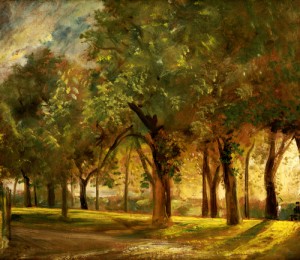
Judge’s Walk, Hampstead, Oil on Paper Laid on Canvas, 1821.
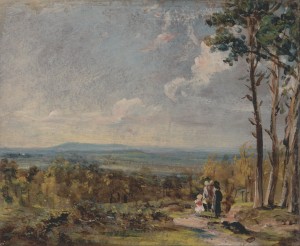
Hampstead Heath, Looking towards Harrow 1821. Oil on paper laid on Canvas. Yale Center for British Art, Paul Mellon Collection.
Branch Hill Pond Judges Walk looks out over Branch Hill Pond, which featured in many of Constable’s standard Hampstead compositions as well as oil sketches.
This is his first known dated oil of a Hampstead subject, painted on canvas at the end of October 1819. Constable would go on to repeat variations of this view until 1836 (‘Hampstead Heath with a Rainbow’ in the Tate collection).
This painting includes some brilliant impasto work dispatched with the palette knife.
Difficult to obtain the exact view, and probably taken from a slightly different angle to the right, but this shows the hollow where Branch Hill Pond once sat, looking west towards Harrow. The house to the left through the trees, The Chestnuts, on Branch Hill was once lived in by the American singer and actor Paul Robeson during the late 1920s.
The Grove With a flat roof resembling the quarter deck of a man-of-war, the house called ‘The Grove’ was occupied in the early nineteenth century by a former lieutenant of the navy, Fountain North. North had had the house altered, and is said to have fired cannon on special occasions.

‘A Romantic House at Hampstead’ (The Grove), 1832. National Gallery Berlin.
Constable made several views of this property from different angles. The painting here shows the house as seen from Lower Terrace, almost across the road from number 2. The house is little altered and the same view can be obtained today. It is sometimes referred to as ‘Admiral’s House’ having been renamed that in 1917, in the mistaken belief that Admiral Mathew Barton had lived there. The painting was known as the ‘Romantic House’ amongst Constable’s children.
Very pleased to announce that my first solo exhibition will take place at Domby Gallery in Southport between 14th May and 25th June. The exhibition will feature a selection of my Wirral landscapes along with river scenes painted on both banks of the Mersey.
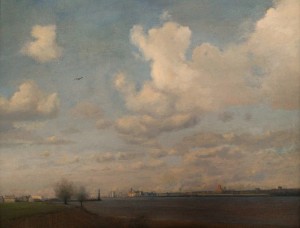
The Mersey from Shorefields, New Ferry. Oil on Canvas.
The special preview and drinks will take place at the gallery between 6pm – 8pm on Saturday 14th May.
Please see the Domby Gallery website for further details.
It has been a great start to the New Year as I’m embarking on a new commission to create a piece of Wirral history.
This year is the bicentenary of the first steamer that ran on the River Mersey between Liverpool and Eastham on Wirral, The Princess Charlotte. Sketches and lithographs of the boat featured in 19th Century newspapers and literature but it has never been properly depicted in colour before. To create the painting I’ll be working off these old prints, along with sketches I made at Eastham in 2012 / 13. Having spent many hours absorbing the landscape and river, I’m really excited by the prospect of depicting a stretch of the Mersey coastline I really love!
The painting will go on display for the first time at the Wirral History & Heritage Fair at Birkenhead Town Hall on Saturday 12th March. Check back in a month to see the finished work, and if you can make it down on the 12th – see you there. Stuart
Throughout August and early September I will be in residence and have work available for sale at Bridge Cottage in Port Sunlight. The cottage has been opened as part of a pilot project run by Port Sunlight Museum, and will be open at selected times throughout the week, with free entry.
The Cottage was formally home (for a brief period in the 1890s) to the founder of Port Sunlight, William Hesketh Lever, and as well as an architecturally beautiful house on the outside, it still retains some of its original sumptuousness inside. Hopefully an inspiring place to work… please see Port Sunlight Museum’s dedicated Facebook page for more details of opening times;
https://www.facebook.com/bridgecottagepilot
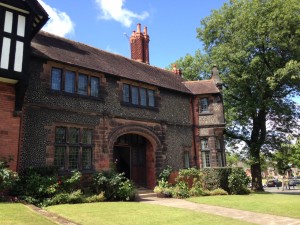
Bridge Cottage, Port Sunlight